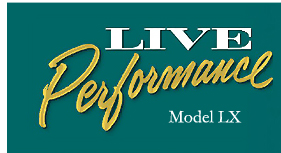

In the LX this is achieved using a novel method that generates pulse width modulated drive signals for the note solenoids using a toggle register. A toggle register does not propagate a carry from stage to stage, resulting in an operating speed higher than that of an equivalent binary counter. This higher operating speed in turn translates into higher resolution of the pulse width modulated drive signals. The theory of toggle registers is not particularly difficult, but it is unfamiliar to many engineers. We therefore present both the theory and a practical example of the use of toggle registers for those who would like to learn more. For a presentation of the theory of toggle register polynomials, click here. For a Verilog example of the application of toggle registers, click here. |
